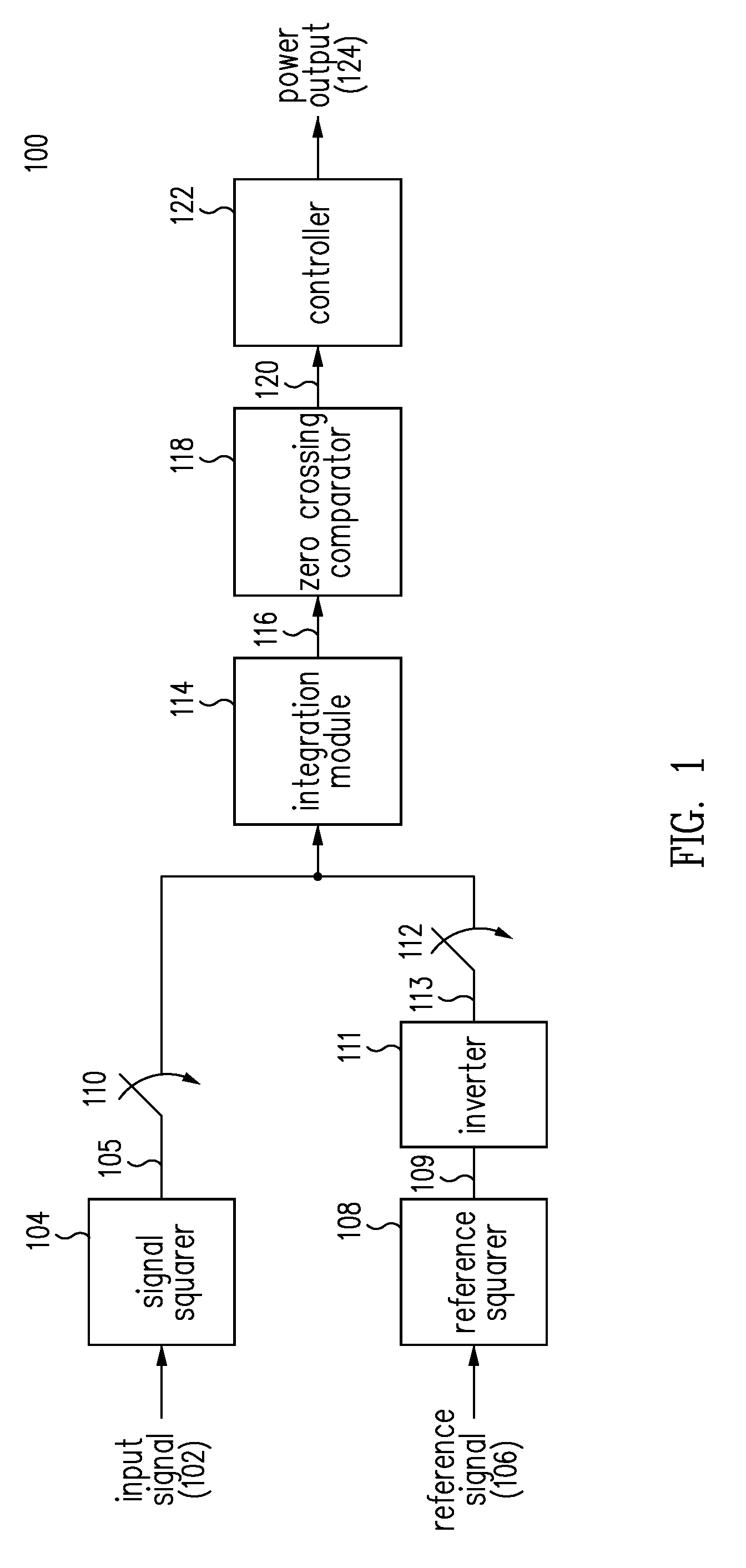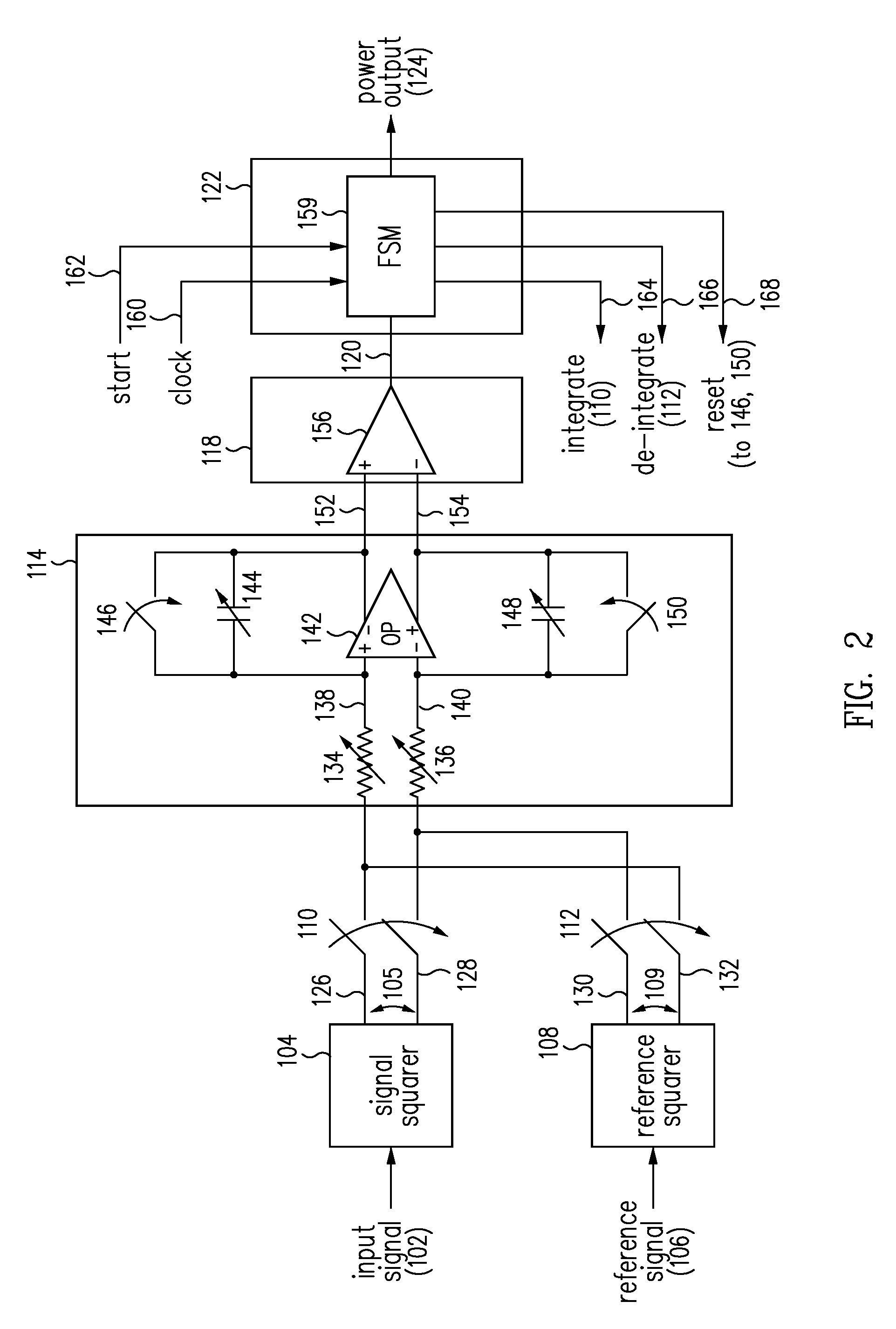True RMS power measurement
a power measurement and root mean square technology, applied in the field of true root mean square (“ rms”) power measurement of signals, can solve the problems of difficult and costly change to the integration time, inability to achieve the change of integration time, and inability to obtain digital outputs with extra circuitry, so as to reduce or simplify the bill of materials, improve the performance of power measurement, and remove the sensitivity of power measurement
- Summary
- Abstract
- Description
- Claims
- Application Information
AI Technical Summary
Benefits of technology
Problems solved by technology
Method used
Image
Examples
Embodiment Construction
[0019]Systems and methods are provided for measuring power of a signal such that the measured power is insensitive to PVT variations of the measurement systems. In various embodiments, a power measurement system of the present invention includes replica analog squarer circuitries, an integrating ADC, and a controller. A first analog squarer circuitry generates the square of the signal to yield the instantaneous power of the signal. The integrating ADC integrates the instantaneous power of the signal over a programmable integration interval to build up an integrated voltage at the output of the ADC. A second analog squarer circuitry generates the square of a known reference signal. After the integration interval, the integrating ADC receives the square of the reference signal to de-integrate the integrated voltage over a de-integration interval. The de-integration interval is measured as the time it takes for the integrated voltage to completely de-integrate. The controller digitally...
PUM
 Login to View More
Login to View More Abstract
Description
Claims
Application Information
 Login to View More
Login to View More - R&D
- Intellectual Property
- Life Sciences
- Materials
- Tech Scout
- Unparalleled Data Quality
- Higher Quality Content
- 60% Fewer Hallucinations
Browse by: Latest US Patents, China's latest patents, Technical Efficacy Thesaurus, Application Domain, Technology Topic, Popular Technical Reports.
© 2025 PatSnap. All rights reserved.Legal|Privacy policy|Modern Slavery Act Transparency Statement|Sitemap|About US| Contact US: help@patsnap.com



